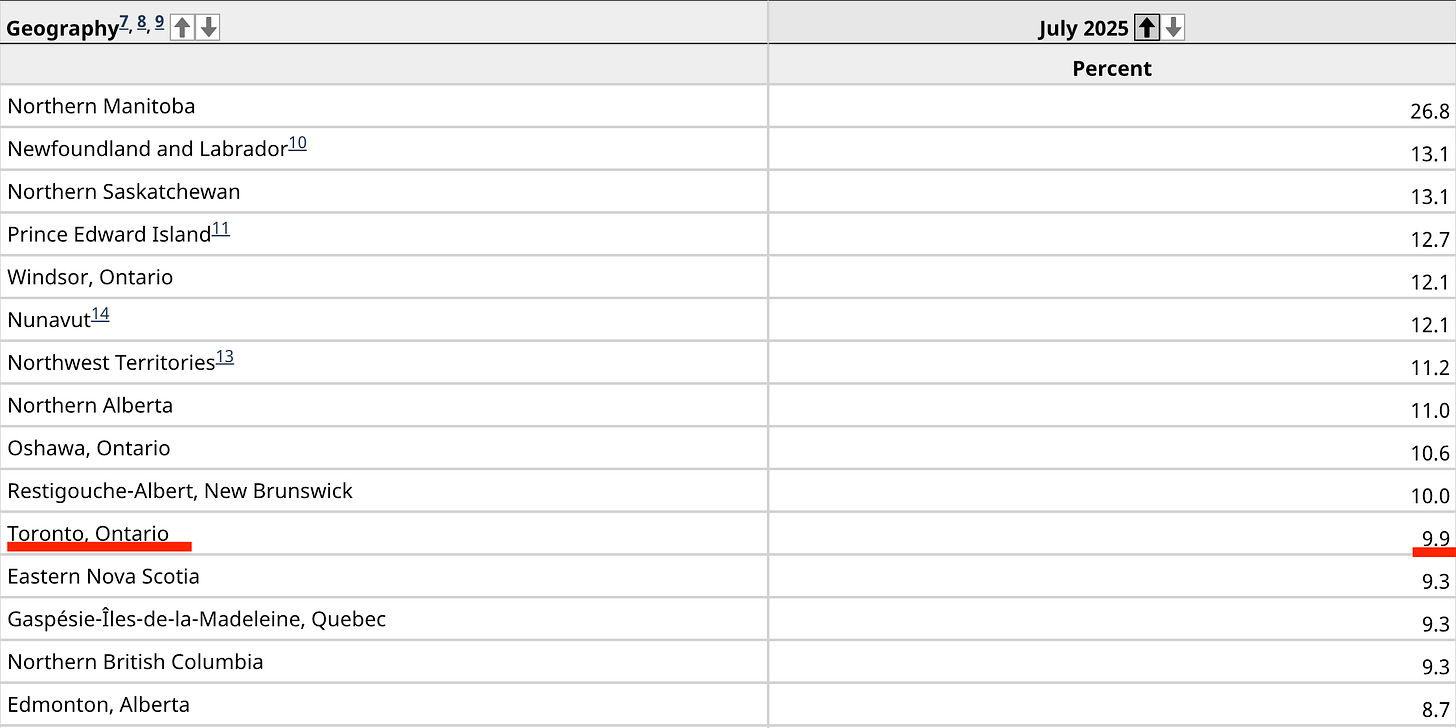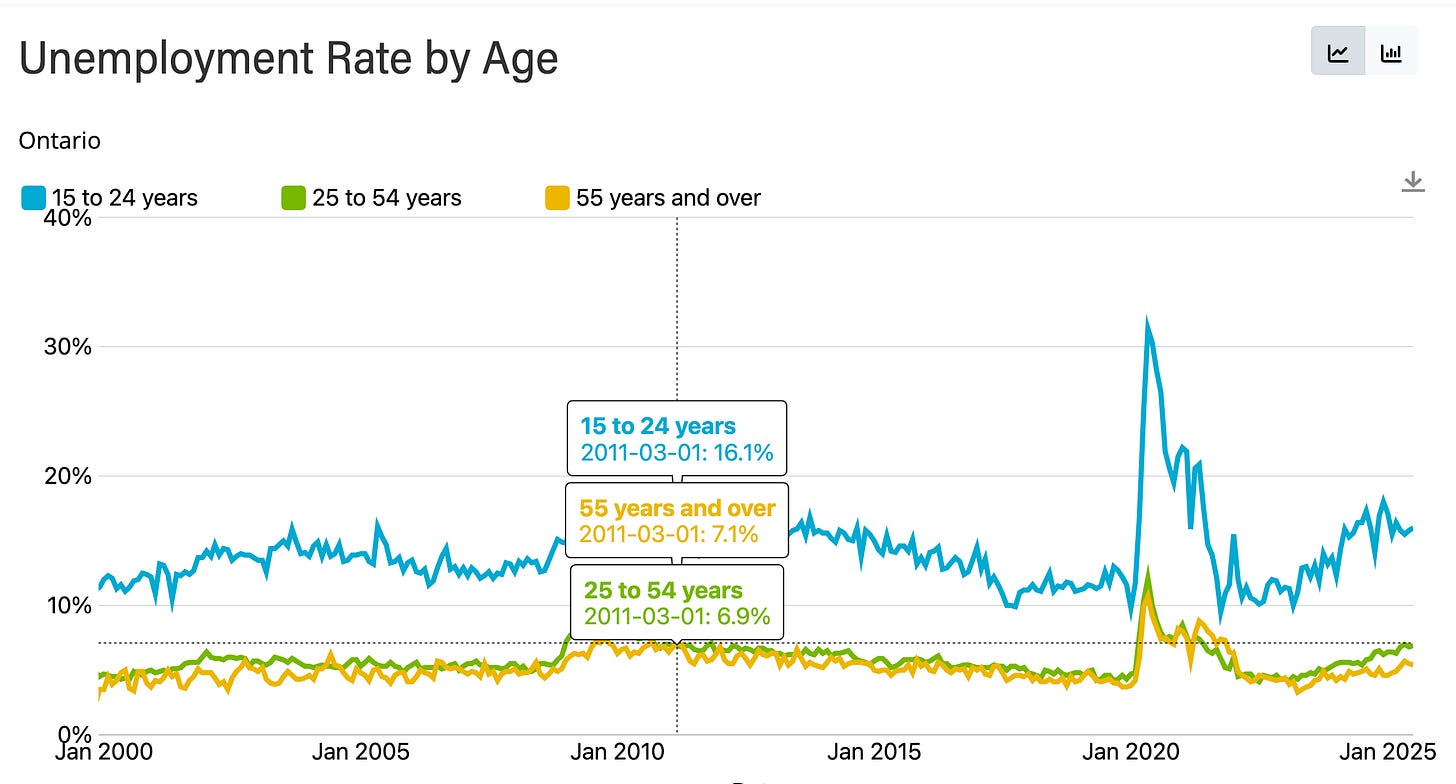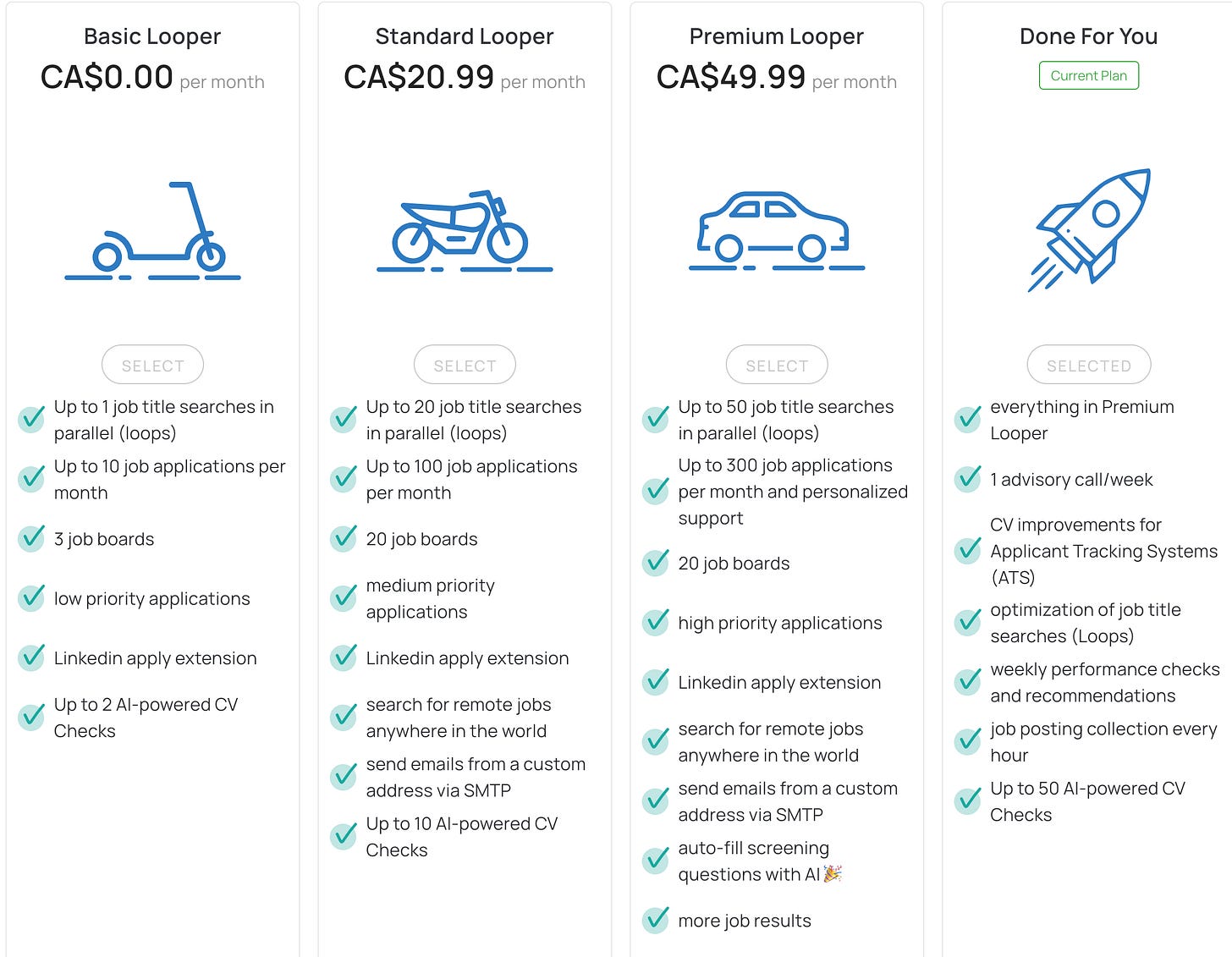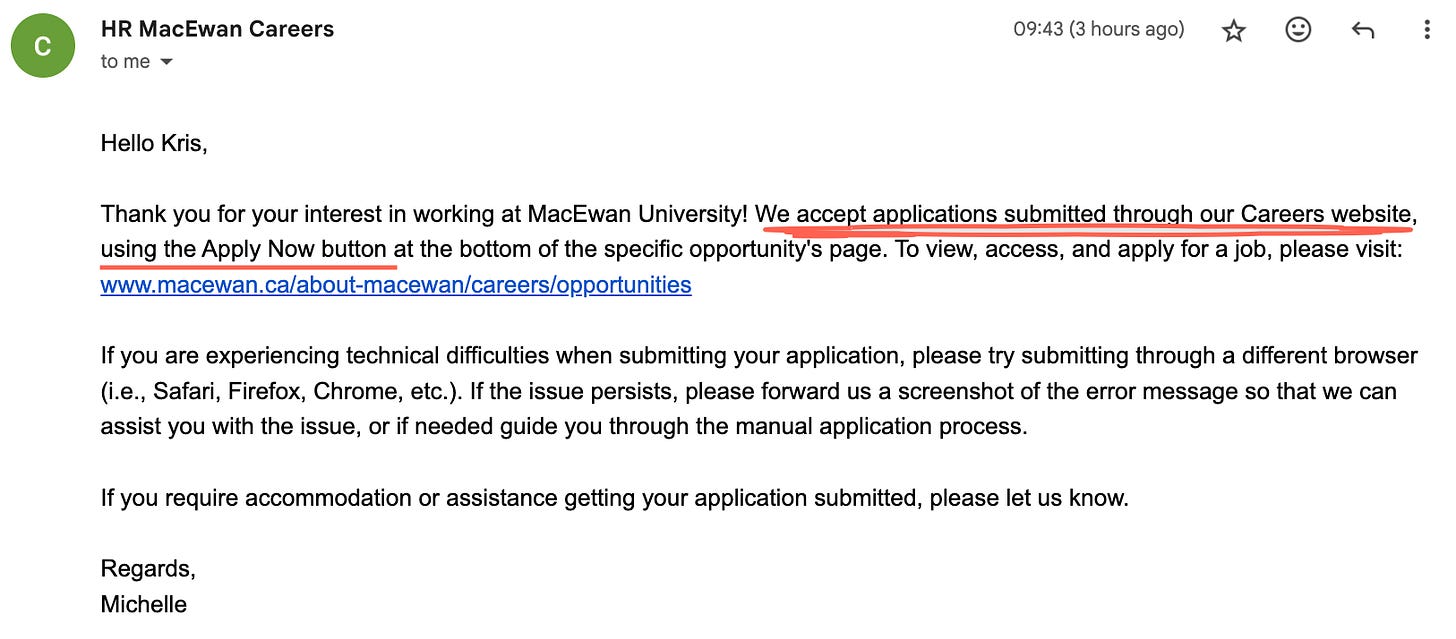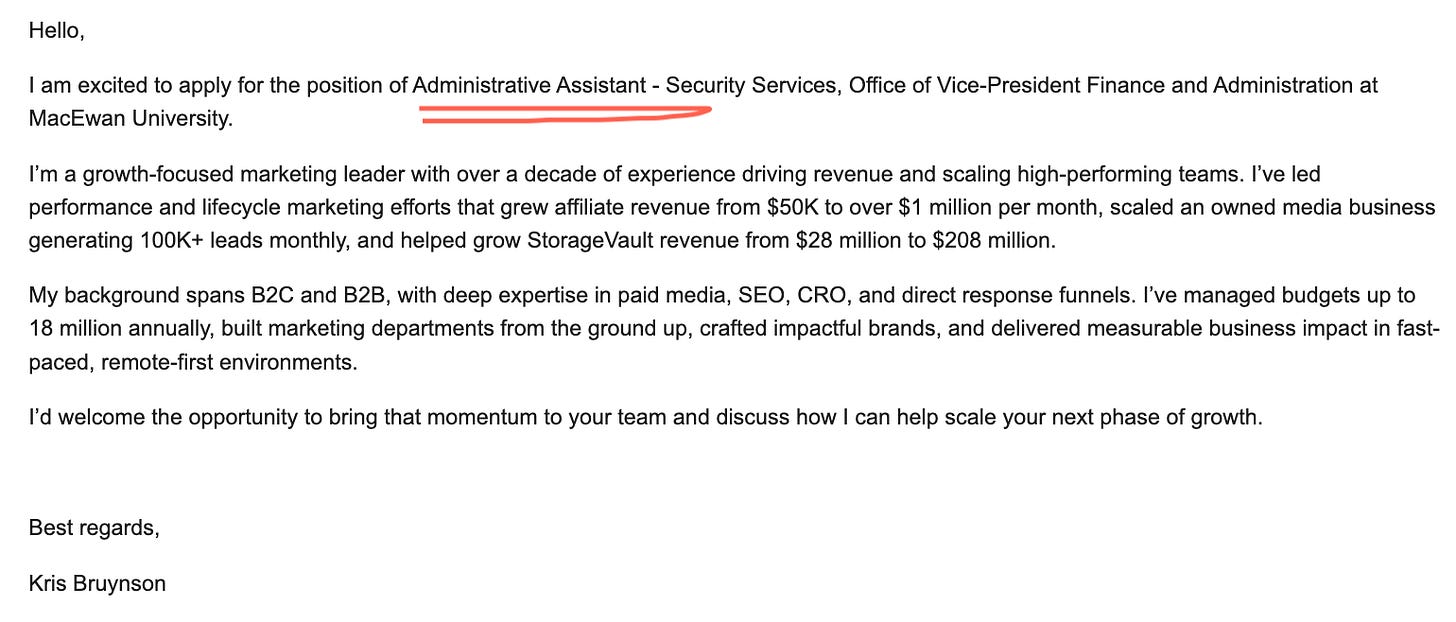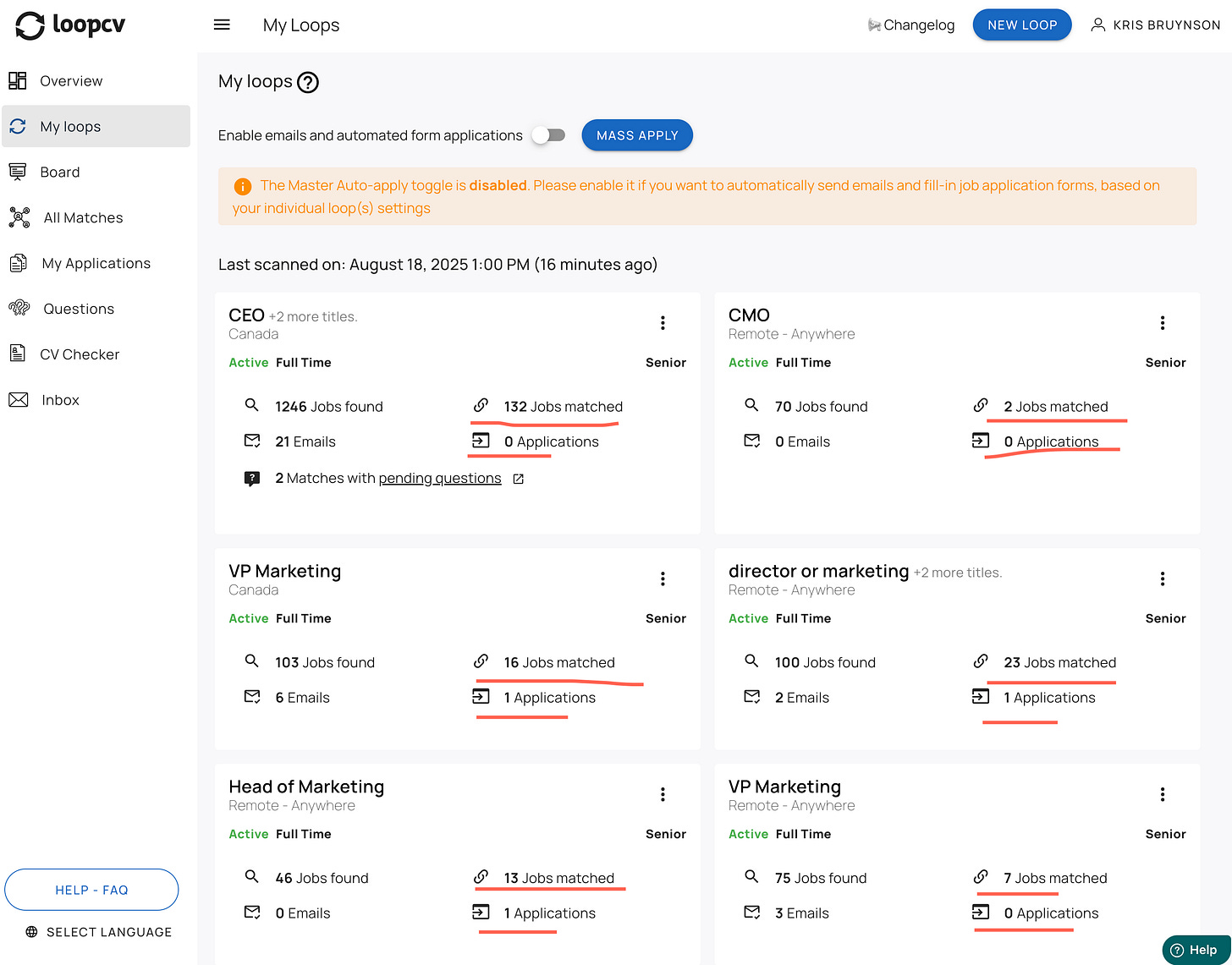I used AI job application software and this is how well it worked.
Turns out the only thing it applied for correctly was wasting my time.
I have to admit, the Toronto unemployment rate hit 9.9% in July, and I feel it.
I’ve been job hunting for the last few months. In the past, my lead rate sat around 10% and my conversion rate at 1.5%. This time it’s 5% and 0% on 300+ applications.
Oof.
I create a cover letter for every job (yes, with ChatGPT’s help). I message the hiring manager or recruiter when I can. And yet… nothing.
I spoke with a couple of recruiters last month and the job market vibes are, frankly, meh. It’s moving, but more like a polite shuffle than a sprint. Budgets are tight, hiring managers are picky, and “good enough” gets ghosted harder than a Hinge date who claims to “love walks.” Companies are not just hiring, they are hunting unicorns with laser scopes.
The unemployment rate in Ontario is now higher than during the 2008 financial crisis and is creeping toward pandemic levels.
The two things I’ve learned about this job market:
It’s a buyers market
The average unemployment rate in Toronto is normally 6.8 to 7%. With it now at 10%, employers have about 50% more candidates to choose from. Compared to pre-pandemic levels of 5 to 6%, it is closer to 100% more.
That is shocking, and it means I have about half the chance of landing a role as I did before. My numbers prove it. Historically: 10% lead rate, 1.5% conversion. This time: 374 applications, 5% lead rate, 0% conversion.
Lack of an MBA is excluding me from recruitment filters.
Employers want top performers. The best predictors of success are conscientiousness and IQ, but since companies cannot ask every candidate to take personality and IQ tests, they use education as a proxy. It is not perfect, but it is safe.
That is my problem. I do not have an MBA. My track record suggests I can outperform most, but because I lack those three letters on my résumé, I often do not even make it to the recruiter stage.
Exploring AI
Always looking to improve, I tried automating my applications with AI. After manually slogging through 30 apps in a day, I dreamed of an AI “shotgun strategy,” hundreds or even thousands of applications with minimal effort.
I narrowed it down to two platforms: jobcopilot.com and loopcv.pro. I went with Loopcv, signed up for the premium plan, uploaded my résumé, set up SMTP with my Gmail, and let it run.
The results? Brutal.
I didn’t do much of a purchase analysis. I kept it simple. I plugged both sites into Ahrefs, checked which had steady traffic over the longest period, and used that as a proxy for being more established and less buggy.
I bought the premium plan on Loopcv, setup my resume, my SMTP with the personal Gmail account, and boom. I was off.
The results left much to be desired… I hold no ill will toward any company that tries to innovate. I’m always excited to try a new tool that will make my life easier, but AI job application software has a long way to go.
The Problems
1. Applying incorrectly
Instead of using the job board or LinkedIn, it defaulted to emailing recruiters directly, often sending applications to the “accommodations” email address at the bottom of postings. Awkward.
2. Applying for the wrong jobs
After letting the AI run throughout the night, I woke up to see that I had applied for jobs I wasn’t qualified for.
“Administrative Assistan - Security Services”
“Vice President, Medicine, Quality and Safety”
3. It didn’t complete the application for most jobs
It seemed to find a fair amount of jobs in the 12 hours I let it run, but applied to almost none of them. It emailed a few, but as far as applying through the proper channels, it was pretty bad at it.
4. Finally, the negative keyword list isn’t realistic.
The platform lets you add negative keywords, which exclude job postings containing certain terms. The problem is I should not have to add “administrative assistant” to the list. The AI should know a VP of Marketing is not applying for that role. They are completely different jobs with different skill sets. If the expectation is that I build an exhaustive list of exclusions, the software is not really doing its job.
Was there any upside?
A little. As a job search aggregator, it is not bad. It does pull listings into one place. But as an application tool, it is nowhere near ready.
Conclusion
I was shocked at how far off the results were from what AI should be capable of. It felt like there was barely any AI at all. I should not need to hack together a giant keyword exclusion list, the software should figure that out.
Maybe I will try Jobcopilot at some point. For now, I am back to manual applications.



